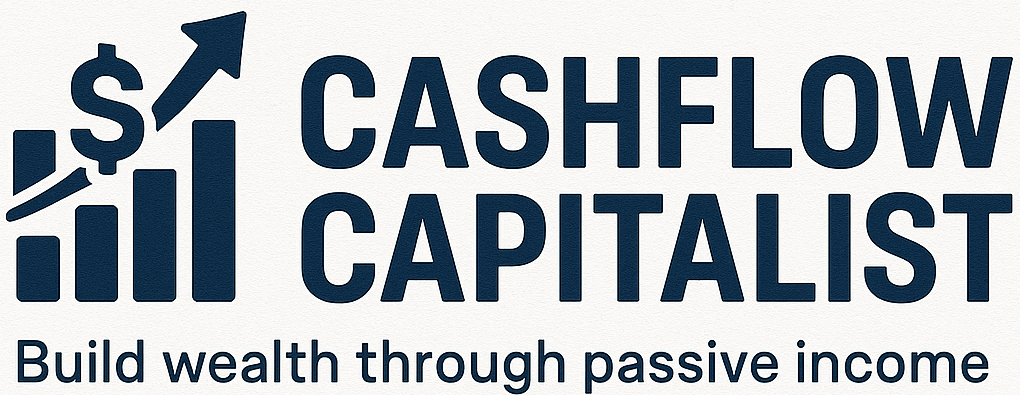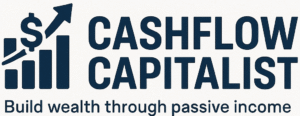Building Wealth Slowly: The Long-Term Investor’s Guide to Financial Freedom
Building wealth doesn’t happen overnight. It takes time, discipline, and patience. For Canadians aiming for financial freedom, a long-term strategy is key. Understanding compounding and having a diversified investment portfolio sets you up for success.

You don’t need to be a financial expert to build wealth. By starting early and staying committed, you can harness the power of compounding. This guide will show you how to build a strong investment portfolio. It focuses on strategies for Canadian investors.
Key Takeaways
- Building wealth requires patience and discipline.
- A long-term investment strategy is key for financial freedom.
- Diversified investments help you reach your financial goals.
- Compounding is a powerful tool for growing wealth.
- Starting early is essential for successful long-term investing.
The Power of Patience in Wealth Building
Building wealth often requires patience, a key trait of successful long-term investors. The saying “Slow and steady wins the race” is very true in investing. Quick decisions can often lead to big losses.
Why Quick Returns Often Lead to Long-Term Losses
Quick returns might seem appealing, but they can harm your long-term wealth. High-risk investments may offer big gains but are more likely to fail. Focusing on quick profits can hurt your long-term goals. For a deeper look into long-term investing, check out this beginner’s guide to stock market.
The Exponential Advantage of Time in the Market
On the other hand, patient investing uses time to your advantage. The phrase “Time is money” is very relevant here. By letting your investments grow over time, you can see the power of compound interest.
This method helps you build wealth steadily, even when the market is volatile. As a long-term investor, you’re better equipped to handle market ups and downs. This way, you’re more likely to reach your financial goals.

Long-Term Investing in Canada: The Path to Sustainable Wealth
As a Canadian investor, you know the country’s financial scene well. It offers great chances for long-term investing. You have tax-advantaged accounts and a wide range of investment options.
Navigating the Canadian Investment Landscape
Understanding the Canadian investment scene is key to success. You should know about stocks, bonds, ETFs, and REITs. For example, real estate investing in Canada can offer steady passive income.

Maximizing TFSAs and RRSPs for Tax-Efficient Growth
Using tax-advantaged accounts like TFSAs and RRSPs boosts your investment strategy. TFSAs grow your investments tax-free. RRSPs let you deduct contributions, lowering your taxable income. This way, you can grow your wealth more efficiently.
Setting Meaningful Financial Milestones
Setting clear financial goals is vital for success. Goals might include saving for retirement, funding education, or achieving financial freedom. Breaking down big goals into smaller steps helps you stay on track and motivated.
The Transformative Magic of Compound Growth
Canadians can turn small, steady investments into a big nest egg with compound growth. This financial strategy uses time to grow small investments into big wealth.

How Small Contributions Become Substantial Wealth
Compound growth is amazing because it makes money on your investments and then reinvests it. For example, putting $100 a month into a TFSA can grow a lot over time, thanks to TFSA compounding. As shown by wealth compounding examples, regular investing can build a lot of wealth over the long term.
Warren Buffett once said, “Someone’s sitting in the shade today because someone planted a tree a long time ago.” This quote shows the importance of long-term investing and compound growth.
“Price is what you pay. Value is what you get. Whether we’re talking about socks or stocks, I like buying quality merchandise when it’s marked down.” – Warren Buffett
Canadian Compounding Success Stories
Many Canadians have seen the benefits of compound growth. By starting early and investing regularly, they’ve reached financial freedom. These stories prove that long-term wealth strategies work well in Canada.
Protecting Your Compounding Growth
To make the most of compound growth, start early, invest regularly, and don’t take money out too soon. This way, you keep your growth going and secure your financial future.
Crafting Your Resilient Canadian Investment Portfolio
A solid investment portfolio is key to financial freedom in Canada. It’s all about strategic asset allocation and diversification. Spread your investments across different types to reduce risk and increase returns.
Strategic Asset Allocation for Decades of Growth
Creating a mix of assets is vital for long-term success. For Canadians, this means combining stocks, bonds, and other securities. This approach helps you ride out market fluctuations and enjoy growth from various assets.
Canadian ETFs That Reward Patient Investors
ETFs are great for those willing to wait. They offer diversification and can be traded like stocks. Some top Canadian ETFs include:
- Core Index ETFs: ZCN, XEQT
- Income-Focused ETFs: CDZ, ZRE, HVOI
Core Index ETFs: ZCN, XEQT
Core Index ETFs like ZCN and XEQT track major Canadian indices. They’re perfect for those looking for steady growth over the long term.
Income-Focused ETFs: CDZ, ZRE, HVOI
Income-Focused ETFs, such as CDZ, ZRE, and HVOI, aim to provide regular income. They invest in dividend stocks, real estate, and other income sources.
Building a Portfolio That Withstands Market Cycles
To create a portfolio that lasts through market ups and downs, focus on diversification and rebalancing. Regularly check your portfolio and adjust it as needed. This keeps your investments in line with your long-term goals.

Your Consistent Investment System for Success
Investing consistently is key. A systematic approach keeps you on track. By using a long-term investment strategy, you can handle market ups and downs. This way, you can reach your financial goals.
Dollar-Cost Averaging Through Market Fluctuations
Dollar-cost averaging is a smart strategy. It means investing a set amount regularly, no matter the market. This method lessens the effect of market swings and timing risks.
- Invest a fixed amount regularly
- Reduce the impact of market fluctuations
- Benefit from lower average costs over time
Automating Your Way to Wealth
Automating your investments keeps you consistent. It stops you from making emotional decisions based on market changes. An investment automation plan ensures your investments are made regularly and efficiently.
“The key is not to time the market, but to time the investment.” –
Harnessing Dividend Reinvestment Plans (DRIPs)
A Dividend Reinvestment Plan (DRIP) lets you reinvest dividends to buy more shares. This grows your wealth over time. It’s a great way to build wealth in the long run.

Strategic Rebalancing for Optimal Returns
Strategic rebalancing means checking and adjusting your portfolio. This keeps it in line with your goals and risk level. It helps you stay on track and get the best returns.
By using these strategies, you can build a consistent investment system. This system helps you achieve long-term financial success.
Mastering the Investor Mindset
As a long-term investor, it’s key to master your mindset. This helps you handle the market’s ups and downs. Staying calm and focused during market volatility can greatly affect your investment success.
Developing Emotional Discipline
Emotional discipline is the base of a good investment plan. It means making smart choices, not quick ones based on short-term market changes. To build emotional discipline, do the following:
- Set clear long-term financial goals
- Develop a well-thought-out investment plan
- Avoid making investment decisions based on emotions
Turning Market Downturns into Opportunities
Market downturns can be scary, but they also offer chances to buy good investments at lower prices. With a patient investor mindset, you can use these times to grow your portfolio.
Filtering Financial Noise and Staying the Course
The financial media can fill you with financial noise, often making big deals out of small market changes. To keep your focus on long-term goals, it’s vital to ignore this noise and stick to your investment plan.
From Modest Beginnings to Financial Independence
You don’t need a lot of money to start building wealth. A small start is enough. The journey to financial freedom is about being consistent and patient, not needing a big investment.
Starting Your Journey with Any Amount
Starting with $100 or $1,000 is the first step. Automating your investments helps you invest regularly. This is key for long-term success. Use Tax-Free Savings Accounts (TFSAs) or Registered Retirement Savings Plans (RRSPs) for growth that saves on taxes.
Celebrating Progress: From $10K to $100K and Beyond
When your investments grow, celebrate your wins. Reaching $10K, $50K, or $100K shows you’re getting closer to financial freedom. For tips on keeping a positive mindset, check out this resource.
Your Personal Roadmap to Seven-Figure Wealth
Having a personal investment plan is vital. Think about your financial goals, how much risk you can take, and when you want to retire. A good plan helps you stay focused and adjust as needed.
| Investment Milestone | Timeframe | Action |
|---|---|---|
| $10K | 1-3 years | Review and adjust your investment strategy |
| $50K | 5-7 years | Consider diversifying your portfolio |
| $100K | 10+ years | Maximize tax-advantaged accounts |
Start small, stay committed, and use the right tools. This way, you can aim for financial independence and maybe even a seven-figure wealth.
Conclusion: Embracing the Slow, Steady Path to Financial Freedom
Building wealth is a marathon, not a sprint. Adopting a patient investing strategy can lead to financial freedom and a secure future. Stay disciplined and focused on your long-term goals.
In Canada, a slow and steady approach to investing offers many benefits. By using tax-efficient strategies and making consistent contributions, you can build wealth sustainably. This path rewards your efforts and ensures a secure financial future.
Reaching financial independence through investing takes perseverance and the right mindset. Stay informed, avoid emotional decisions, and use compounding to your advantage. This way, you can reach your financial goals and enjoy a secure future.
Follow the principles in this guide to start a successful investing journey. Stay committed to your patient investing strategy. You’ll be on your way to achieving your long-term financial goals.
FAQ
What is the best way to start investing for long-term financial goals in Canada?
To start investing in Canada, choose a consistent and diversified strategy. Use tax-advantaged accounts like TFSAs and RRSPs to boost your returns.
How important is patience in investing, and why should I avoid chasing quick returns?
Patience is key in investing. It lets your money grow over time, leading to wealth. Quick returns often come with high risks, so patience is essential.
What are the benefits of using ETFs in a long-term investment portfolio?
ETFs offer diversification and flexibility. They are cost-effective for investing in various assets. They help build a strong portfolio for the long term.
How can I maximize my returns using TFSAs and RRSPs?
Maximize returns by consistently contributing to TFSAs and RRSPs. Choose investments that match your goals. Knowing the tax rules for each account helps too.
What is dollar-cost averaging, and how can it help in investing?
Dollar-cost averaging means investing a set amount regularly, no matter the market. It reduces the impact of market ups and downs, promoting a steady investment approach.
How do Dividend Reinvestment Plans (DRIPs) work, and what are their benefits?
DRIPs reinvest dividends back into the same stock or fund. This strategy boosts returns over time, making it great for long-term wealth.
Why is emotional discipline important in investing, and how can I develop it?
Emotional discipline is vital in investing. It helps avoid impulsive decisions during market changes. Having a long-term plan and sticking to it builds discipline.
How can I start investing with a small amount of money?
Start with a small amount by choosing low-cost options like ETFs. Set up a regular investment plan and use tax-advantaged accounts. Small, consistent investments can grow a lot over time.
What are some strategies for building a resilient investment portfolio?
A resilient portfolio is diversified and well-allocated. Include core index ETFs and income-focused ETFs. Regular rebalancing also helps.
How can I stay focused on my long-term investment goals during market volatility?
Stay focused by sticking to a disciplined investment plan. Avoid emotional decisions based on short-term market changes. Regularly review your strategy to keep it aligned with your goals.




